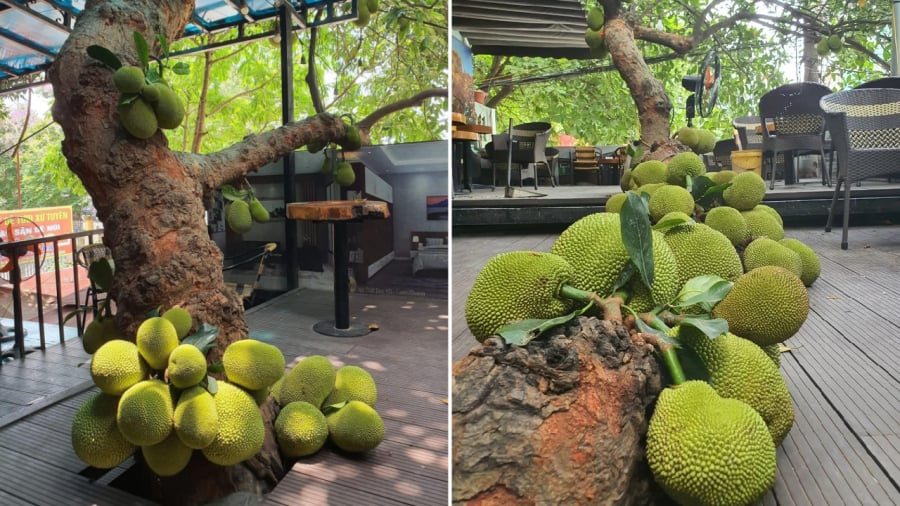Why Mitfruit Wood Is Used for Sculptures in Ancient Times
Why did ancient people use mitfruit wood for sculptures?
Mitfruit wood possesses several desirable characteristics, making it an ideal choice for creating sculptures and religious artifacts. One of its standout features is its durability; mitfruit wood is resistant to warping and is less susceptible to termite damage, ensuring its longevity and preserving its appearance over time.
Additionally, mitfruit wood is weather-resistant and adaptable to diverse environmental conditions. Even in the humid environments of temples and shrines, mitfruit wood maintains its structural integrity and aesthetic appeal.
The wood’s texture is another advantage. Mitfruit wood has a relatively soft structure with a fine grain, making it easier to carve intricate details and complex patterns. This characteristic makes it a preferred choice for creating sculptures with delicate and refined features.

Mitfruit wood, with its durable nature and attractive color, is commonly used for sculptures and religious artifacts.
Freshly cut mitfruit wood exhibits a vibrant yellow hue, which gradually deepens over time into a rich brown color, adding a sense of warmth, elegance, and solemnity to the sculptures.
Mitfruit trees are widely cultivated in Vietnam due to their rapid growth and adaptability to various environmental conditions. Beyond their use for wood, the trees also bear fruit, making them a valuable resource.
In the realm of spirituality, mitfruit wood is believed to bring prosperity, good fortune, and peace to families. Sculptures crafted from this wood are thought to absorb positive spiritual energy, enhancing the sense of tranquility and prosperity in places of worship. The wood also emits a subtle, pleasant fragrance, further contributing to the serene atmosphere of sacred spaces.
Why is it considered inauspicious to plant a mitfruit tree in front of your house?
There are several reasons why planting a mitfruit tree in front of your house is not advisable.
Firstly, mitfruit trees are long-lived and can grow to considerable heights, with expansive branches. They require ample space to thrive, which may not be available in residential areas. While the dense canopy provides excellent shade, it can also pose safety risks during storms.

Mitfruit trees are not recommended for planting in front of houses due to their size and potential safety hazards.
Mitfruit trees shed a significant amount of leaves, and if not maintained properly, they can impact the aesthetics and hygiene of the house.
Additionally, the dense canopy can block sunlight from entering the house, creating a dark and energy-draining living space. It is also believed that “mitfruit trees have spirits, and banyan trees have gods,” leading to superstitions about planting these trees near homes.
If you wish to plant a mitfruit tree, consider doing so in a spacious backyard or a large garden area. Remember that these are just beliefs, and the decision to plant a mitfruit tree should be made based on practical considerations and your personal preferences.
Information provided is for reference only.
Why Do Foreigners Rarely Use Phone Cases? It Turns Out There’s a Surprising Reason.
The use of phone cases is an intriguing cultural contrast between foreigners and Vietnamese locals. While it is uncommon for foreigners to adorn their phones with cases, it is quite the opposite for the Vietnamese, for whom a phone case is a ubiquitous accessory. This prompts the question: why the disparity?



































